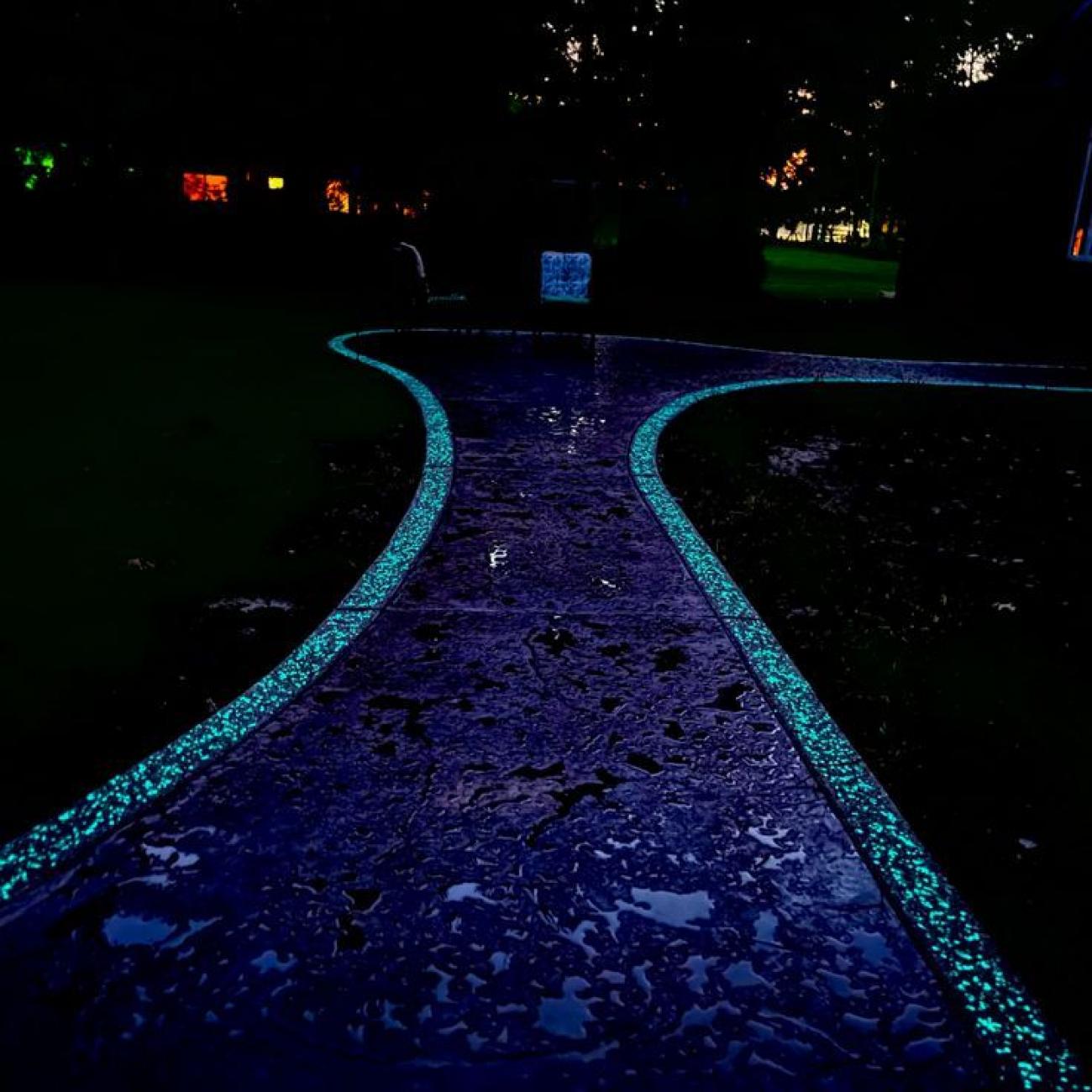

What is Photoluminescent Concrete?
Photoluminescent concrete is a special type of material that contains light-sensitive components, enabling it to absorb sunlight during the day and emit a soft glow at night. This characteristic makes it an ideal choice for decorative applications, enhancing outdoor safety, and providing illumination without the need for electrical systems [1]

Photoluminescent particles are directly mixed into the concrete blend.
These particles absorb energy when exposed to light and glow in the dark.

Photoluminescent powder (commonly SrAl₂O₄:Eu²⁺/Dy³⁺) is dispersed within a cement or mortar matrix.
It can be evenly distributed throughout the material or applied as a surface coating.

Incorporates glowing polymer fibers either in layers or as light-guiding elements.
The direction of light transmission can be controlled, making it suitable for decorative or guided lighting structures [2].

Photoluminescent concrete (LCCM) operates based on long-afterglow phosphor materials, especially SrAl₂O₄:Eu²⁺/Dy³⁺:
Daytime: The photoluminescent particles absorb light energy (sunlight or UV).
Nighttime: The stored energy is gradually released as visible light (greenish-yellow with wavelengths of 510–520 nm).
The glow effect can last for more than 8 hours after light exposure ends, thanks to its long-persistent phosphorescence [2].

The diagram illustrates the transformation process from regular concrete to photoluminescent concrete through UV activation:
Initially, the concrete block appears gray with a typical structure.
When exposed to UV rays, the embedded photoluminescent particles absorb the energy.
The concrete then emits a characteristic green glow, becoming photoluminescent and self-illuminating in the dark.

(a) Samples containing luminous powder glow green with varying intensity based on material distribution after 5 minutes of UV exposure (365 nm).
(b) The same sample under regular light shows no glow—used as a control for (a) and (c).
(c) A large slab glows uniformly after UV exposure, indicating even distribution of luminous powder.
Applications

Photoluminescent concrete is widely used in outdoor pathways, bike lanes, and driveways. It offers visual guidance at night without electrical lighting. The soft glow enhances safety while adding a modern, eco-friendly aesthetic.

In areas like parks, plazas, sidewalks, or pedestrian paths, this material serves as a sustainable lighting solution. It improves nighttime visibility and reduces energy use—especially useful where traditional lighting is impractical or undesirable.

With its striking glow, photoluminescent concrete is used in garden art, miniatures, fountains, or architectural highlights. It creates magical, unique visual experiences in designed outdoor environments.
[1] S. Sundari, Experimental Study on Luminescent Concrete, International Research Journal of Engineering and Technology (IRJET), vol. 8, no. 6, Jul. 2021. [Online]. Available: IRJET Paper
[2] W. Wang et al., Self-luminescent cement-based composite materials: Properties and mechanisms, Construction and Building Materials, vol. 271, Feb. 2021. [Online]. Available: ScienceDirect Article
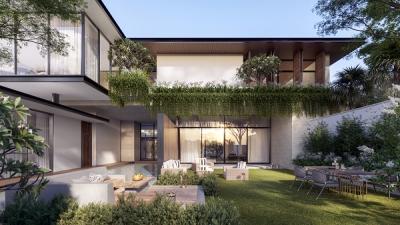
The News 10/11/2025
In the midst of the hustle and bustle of urban life, many Vietnamese families are looking for a different living space – where they can enjoy modernity without being far from nature. Tropical Modern villa architecture is the perfect answer to this need. Not only an aesthetic trend, this is also a smart design philosophy, harmoniously combining technology, local materials and Vietnam's typical tropical climate.
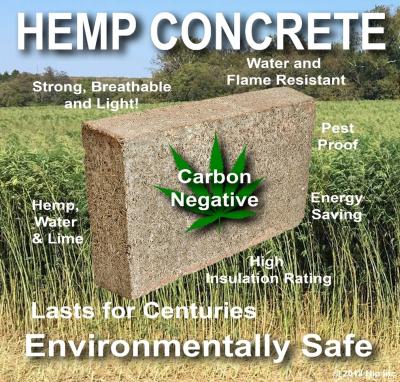
The News 25/10/2025
Hemp-lime (hempcrete) is a non-load-bearing covering material consisting of a hemp wood core (hemp shiv/hurd) combined with a lime-based adhesive, outstanding for its insulation – moisture conditioning – indoor environmental durability; in particular, IRC 2024 – Appendix BL has established a normative line applicable to low-rise housing, strengthening the technical-legal feasibility of this biomaterial.
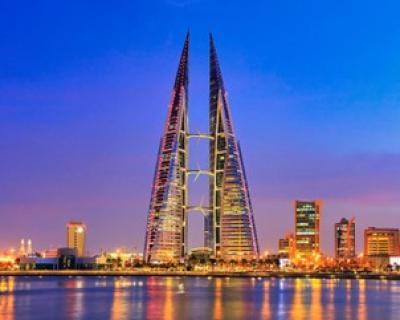
The News 11/10/2025
Amid rapid urbanization and global climate change, architecture is not only construction but also the art of harmonizing people, the environment, and technology. The Bahrain World Trade Center (BWTC)—the iconic twin towers in Manama, Bahrain—is a vivid testament to this fusion. Completed in 2008, BWTC is not only the tallest building in Bahrain (240 meters) but also the first building in the world to integrate wind turbines into its primary structure, supplying renewable energy to itself [1]. This article explores the BWTC’s structural system and design principles, examining how it overcomes the challenges of a desert environment to become a convincing sustainable model for future cities. Through an academic lens, we will see that BWTC is not merely a building but a declaration of architectural creativity.
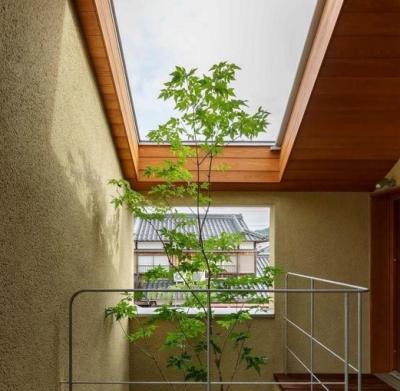
The News 04/10/2025
As buildings move toward net zero architecture and glare free daylighting, traditional glass façades reveal limitations: high thermal conductivity (~0.9–1.0 W/m·K), susceptibility to glare, and shattering on impact. In this context, transparent wood (TW) is emerging as a multifunctional bio based material: it offers high light transmission yet strong diffusion (high haze) to prevent glare, lower thermal conductivity than glass, and tough, non shattering failure. Recent reviews in Energy & Buildings (2025) and Cellulose (2023) regard TW as a candidate for next generation windows and skylights in energy efficient buildings. [1]
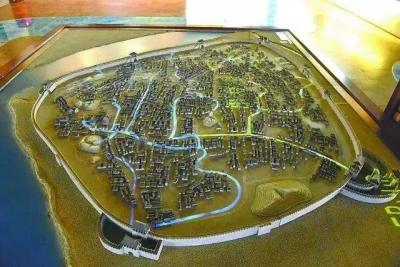
The News 27/09/2025
Urban flooding is one of the greatest challenges of the modern era, when sudden and unpredictable rainstorms can paralyze entire cities. Few would imagine that over a thousand years ago, people had already discovered a sustainable solution: the Fushougou drainage system in the ancient city of Ganzhou, Jiangxi. Built during the Northern Song dynasty, this project remains effective to this day, protecting the city from floods—even during historic deluges. The story of Fushougou is not only a testament to ancient engineering but also a valuable reference for today’s cities seeking answers to water and flooding problems.
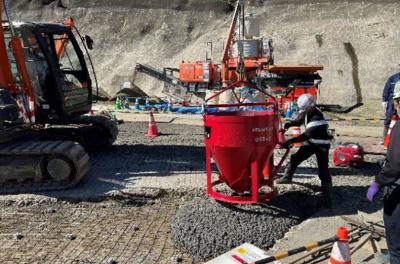
The News 20/09/2025
The construction industry is currently facing immense pressure to reduce carbon emissions, as concrete is not only one of the most widely used materials but also a major source of CO₂ due to its reliance on Portland cement. In response, Shimizu Corporation has conducted extensive research to develop sustainable material solutions aimed at achieving carbon neutrality. One of the most remarkable outcomes is carbon-negative concrete, which partially replaces cement and aggregates with biochar. This biochar is produced from sawdust through a carbonization process and has the unique ability to retain a significant amount of carbon that would otherwise be released into the atmosphere through natural decomposition or combustion. Thanks to this property, carbon-negative concrete not only maintains the necessary mechanical strength for construction but also directly contributes to reducing greenhouse gas emissions. This innovation is considered a promising step that opens new directions for the advancement of green construction in Japan and worldwide.